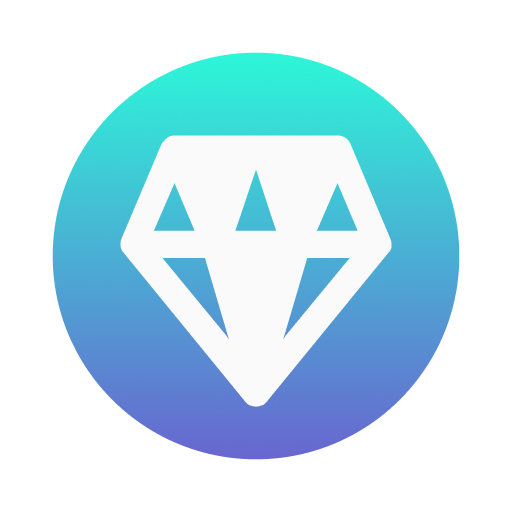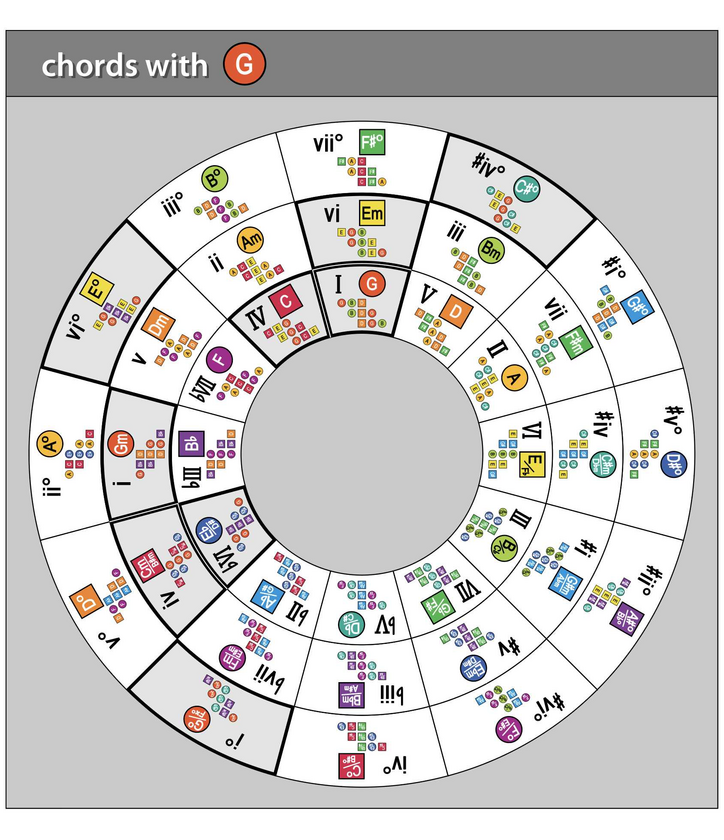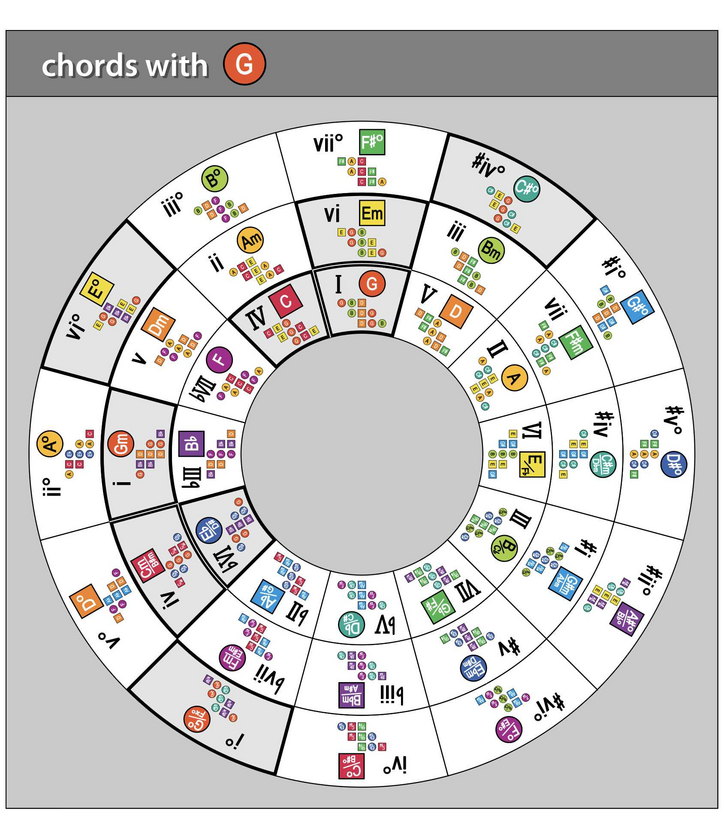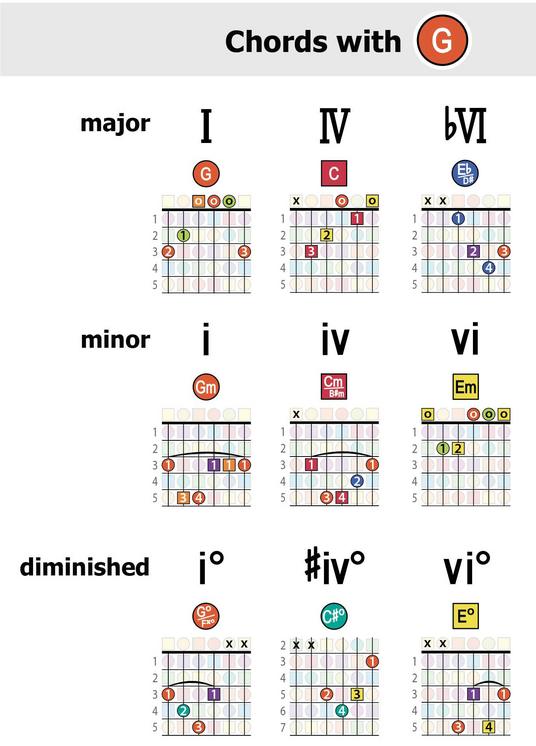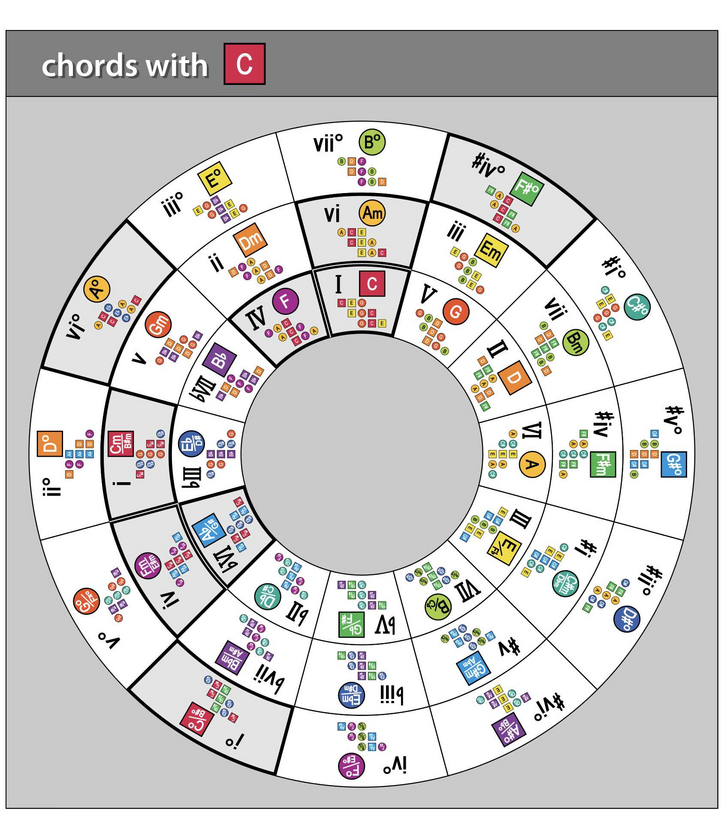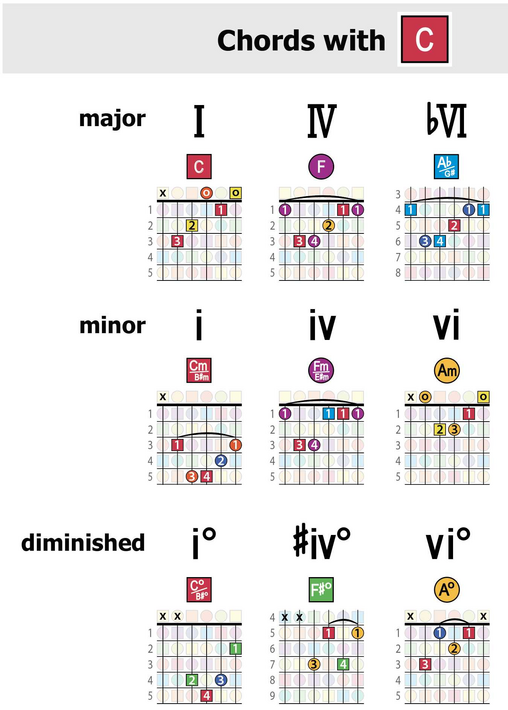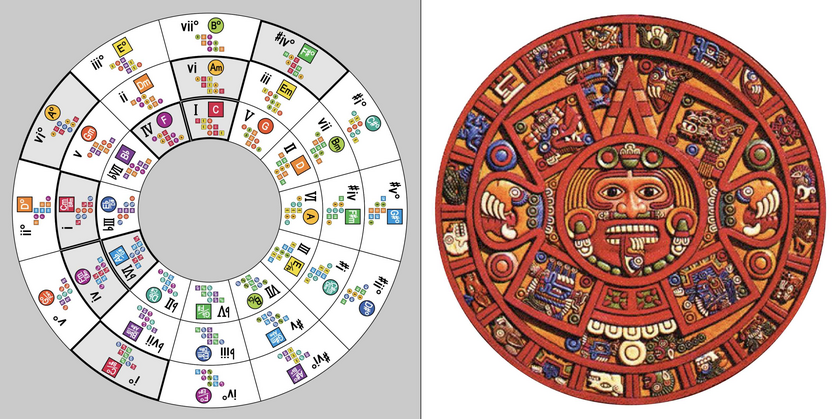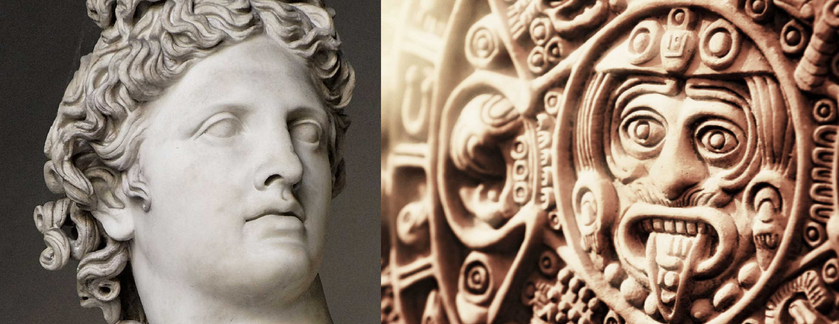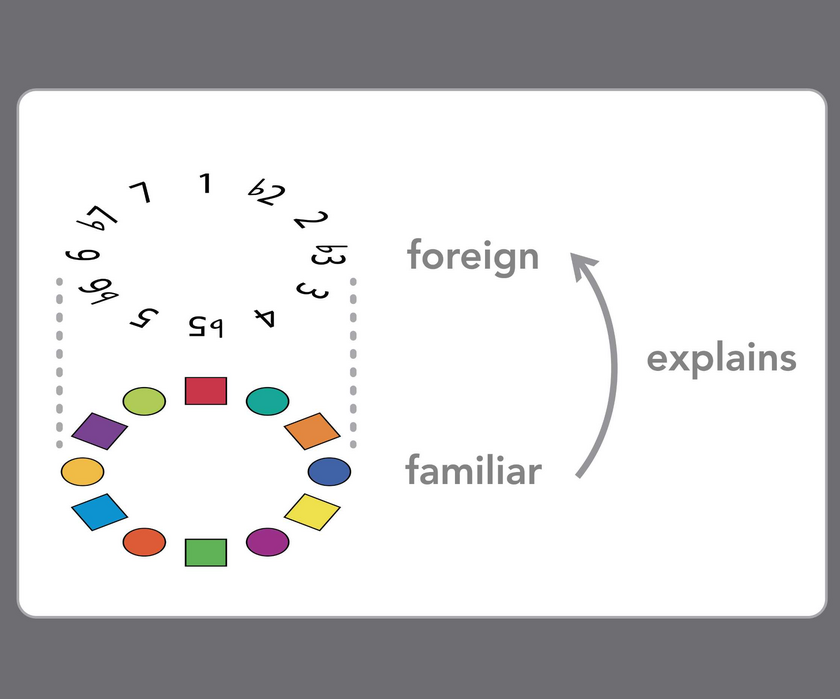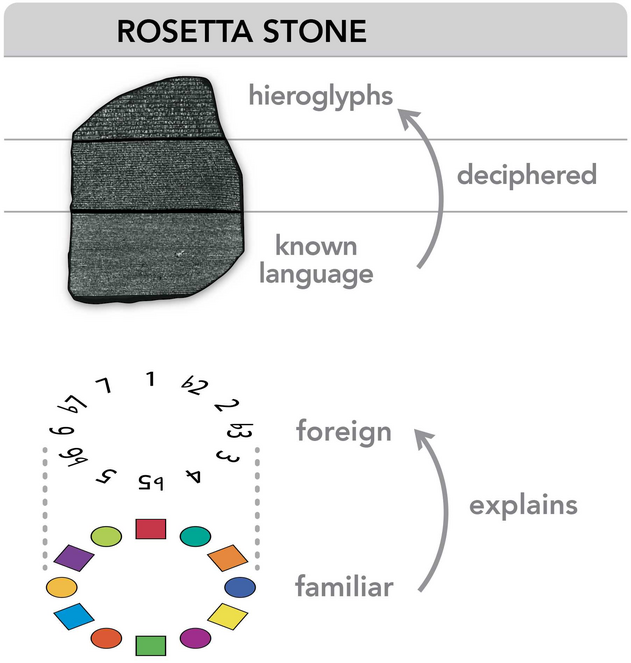Musicians who can play multiple instruments are amazing, right? Even the name “multi-instrumentalist” sounds impressive. So it seems their supreme talent must be equally impressive.…
But the truth is, that’s not so.
Virtually all instruments in the western world are based on the same underlying patterns. And this is definitely the case with stringed instruments in particular.
This video explains in detail:
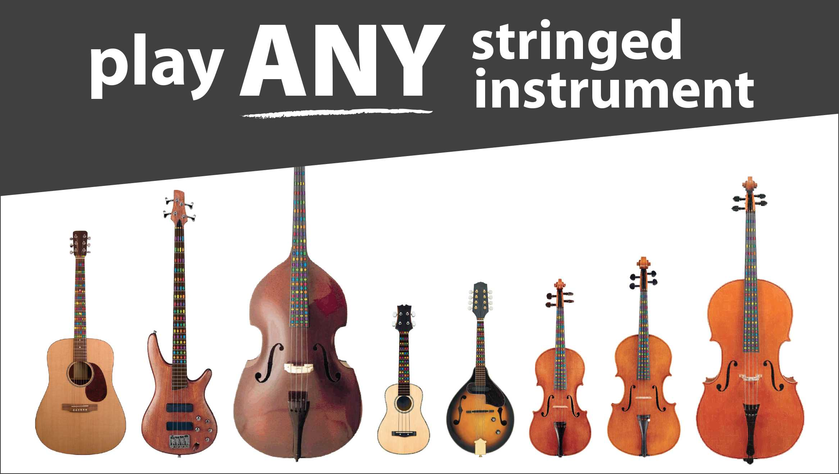 And the following diagrams go with the video, where you can see how to play these 8 popular instruments:
And the following diagrams go with the video, where you can see how to play these 8 popular instruments:

When you get down to it, all 8 fingerboard are just subsets or variations of the standard guitar:
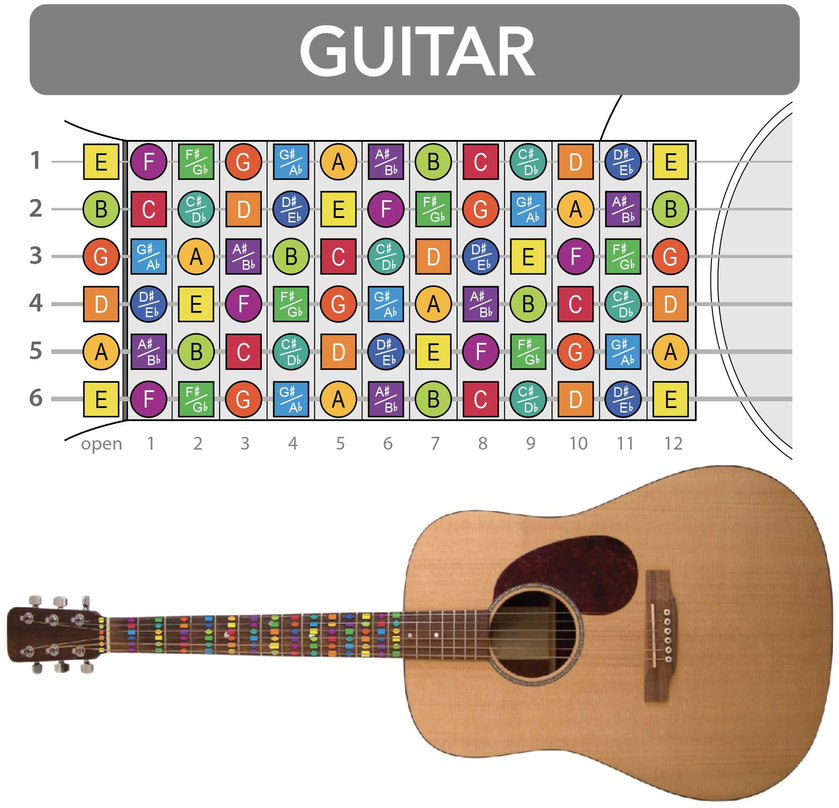 At first glance, the guitar fretboard may look like a scrambled pattern of notes. But based on the instrument’s standard tuning, the strings create a very orderly matrix.
At first glance, the guitar fretboard may look like a scrambled pattern of notes. But based on the instrument’s standard tuning, the strings create a very orderly matrix.
Specifically, each string forms a chromatic scale sequence … while every fret follows a circle-of-fifths arrangement.
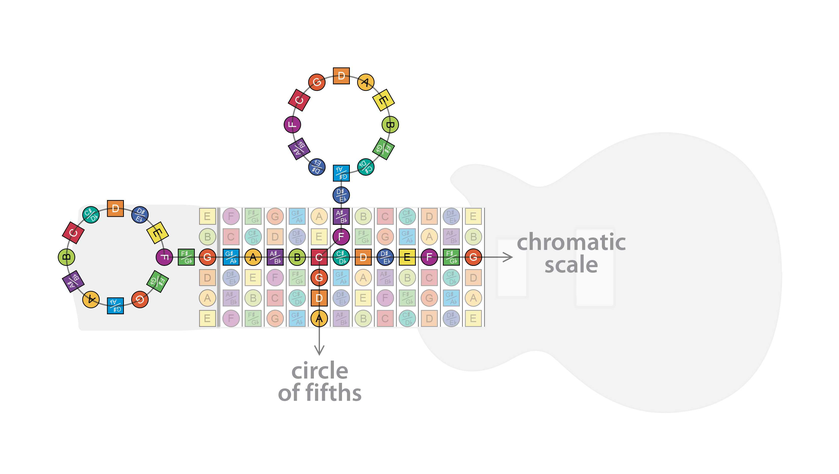 And this intersection of horizontal strings (chromatic scales) and vertical frets (circles of fifths) results in an an interlaced framework of notes:
And this intersection of horizontal strings (chromatic scales) and vertical frets (circles of fifths) results in an an interlaced framework of notes:
 This matrix of harmonically related notes informs how to play scales, modes, chords, and progressions in all keys on the guitar (which I explain is more detail in other posts — and in the full music theory course playlist).
This matrix of harmonically related notes informs how to play scales, modes, chords, and progressions in all keys on the guitar (which I explain is more detail in other posts — and in the full music theory course playlist).
But here, the point is that the layout of notes on the guitar is totally logical — again, based on the instruments standard tuning.
But what’s really cool is that this same relationship between the chromatic scale and circle of fifths also informs how the notes on various other stringed instruments are laid out. Because each fingerboard sits at a similar 9or somethings the same) intersection of horizontal and vertical patterns....

